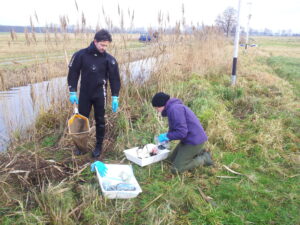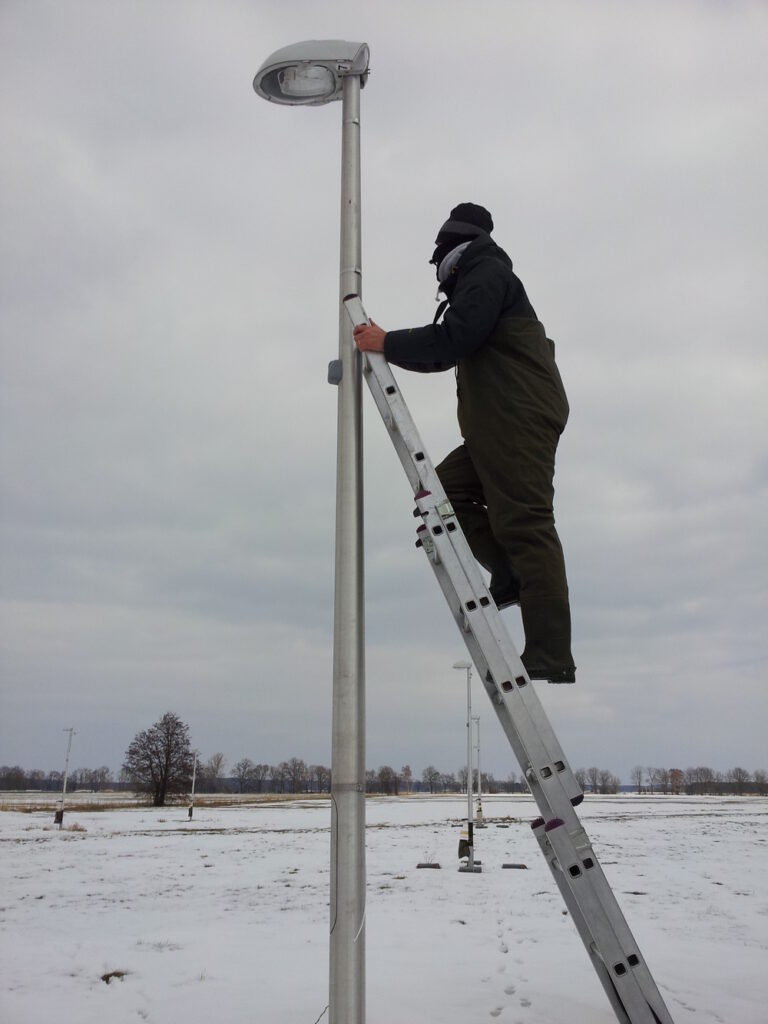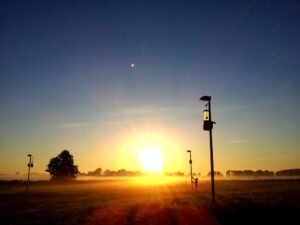Q: How did your involvement in the topic of light pollution start?
 A: Everything started in 2011 when I arrived at the Leibniz-Institute IGB of Berlin. In that occasion I met Dr. Franz Hölker, mind and hand of the project “Verlust Der Nacht”, Dr. Stefano Larsen, and Dr. Michael Monaghan that introduced me to this topic. Before that, I have to admit, as most of the people I was not aware of how light pollution can be such an important treat for ecosystems. In 2013 I applied for a Research Fellowship of the Erasmus Mundus Joint Doctorate Program SMART, funded by the Education, Audiovisual and Culture Executive Agency of the European Commission. Together with funding also provided by the Federal Ministry of Research and Technology, Germany (BMBF-033L038A) and the Federal Agency for Nature Conservation, Germany (FKZ 3514821700). Everything was set to start my research study on Artificial Light at Night (ALAN).
A: Everything started in 2011 when I arrived at the Leibniz-Institute IGB of Berlin. In that occasion I met Dr. Franz Hölker, mind and hand of the project “Verlust Der Nacht”, Dr. Stefano Larsen, and Dr. Michael Monaghan that introduced me to this topic. Before that, I have to admit, as most of the people I was not aware of how light pollution can be such an important treat for ecosystems. In 2013 I applied for a Research Fellowship of the Erasmus Mundus Joint Doctorate Program SMART, funded by the Education, Audiovisual and Culture Executive Agency of the European Commission. Together with funding also provided by the Federal Ministry of Research and Technology, Germany (BMBF-033L038A) and the Federal Agency for Nature Conservation, Germany (FKZ 3514821700). Everything was set to start my research study on Artificial Light at Night (ALAN).
 Q: you have recently authored a publication about effects of artificial light at night in Ecology (“Artificial Light at Night Affects Organism Flux across Ecosystem Boundaries and Drives Community Structure in the Recipient Ecosystem“). Could you explain in simple terms the results you obtained?
Q: you have recently authored a publication about effects of artificial light at night in Ecology (“Artificial Light at Night Affects Organism Flux across Ecosystem Boundaries and Drives Community Structure in the Recipient Ecosystem“). Could you explain in simple terms the results you obtained?
R: This study shows that ALAN not only affect insect and spider behaviour but also changes the dynamics in ecosystems. The light attracts insects, in particularly aquatic insects, from a nearby ditch, and in turn changes the predatory communities of ground-dwelling invertebrates living in the grassland underneath the lights. Here, the activity of several nocturnal spiders and harvestmen increased under ALAN, likely indirectly attracted by the increased amount of “easy prey” in proximity of the lights. ALAN potentially can change cross-ecosystem fluxes at regional and global scales considering the number of street lights along streams and rivers and along the shores of lakes and wetlands. The presence of ALAN, as important ecological threat for natural ecosystems, should be carefully considered in landscape and urban planning as well as in restoration projects.
Q: Your plans for 2018?

R: I am planning to publish more research conducted during my PhD related to how artificial light affect predator-prey interactions between aquatic and terrestrial ecosystems. Since August 2017, I started a postdoc at the Umwelt Campus Birkenfeld, University of Trier in collaboration with the University of Duisburg-Essen where I actually work. In this new project I am focusing my research on fish communities and river restoration, planning to bring the ALAN topic also in this field where ALAN is still rarely considered in restoration actions. I will do my best.